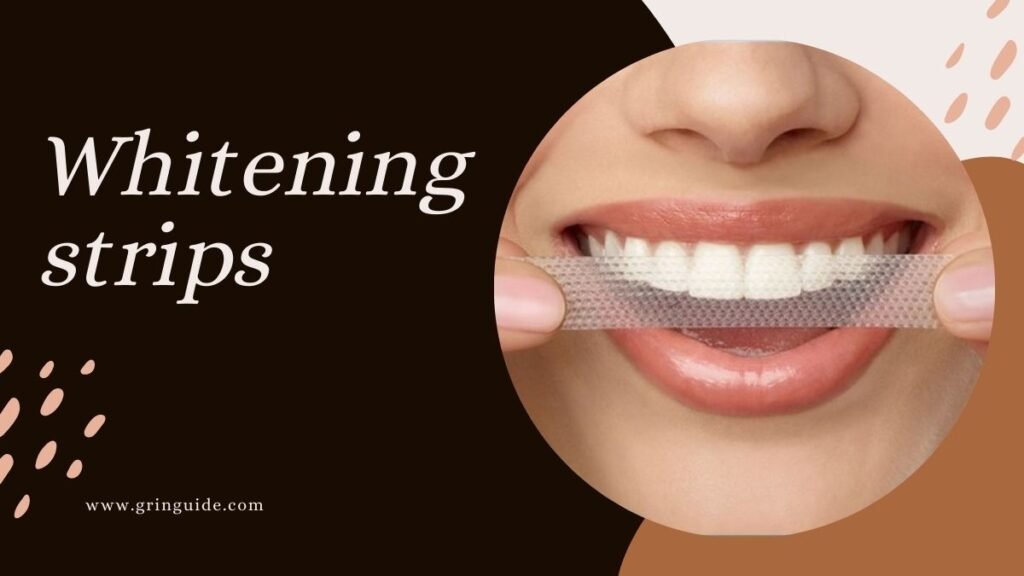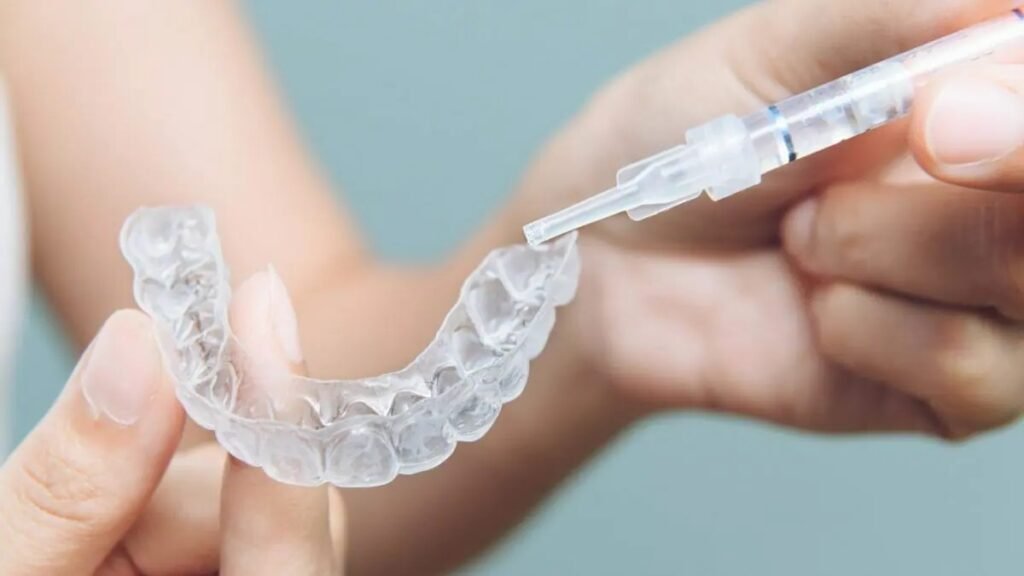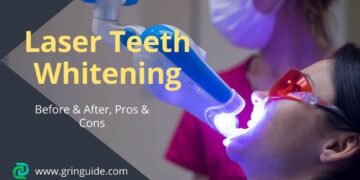Table of Contents
Introduction to Teeth Whiten at Home
Teeth whitening at home has become increasingly popular due to its convenience, cost-effectiveness, and the availability of various safe methods. Understanding why teeth discoloration occurs is the first step in deciding how to whiten teeth effectively. Common causes of teeth staining include dietary habits such as the consumption of coffee, tea, red wine, and certain fruits and vegetables. Smoking is another significant contributor to discoloration, as the tar and nicotine found in tobacco can lead to yellow or brown stains. Additionally, the natural aging process can cause teeth to lose their luster over time as enamel wears away, revealing the yellowish dentin underneath.
While professional dental treatments are undoubtedly effective, many individuals seek to whiten teeth at home for various reasons. One primary benefit is cost savings, as in-office procedures can be expensive. Furthermore, at-home methods offer the flexibility to fit into busy schedules, allowing individuals to whiten their teeth at their own pace and convenience. The accessibility of over-the-counter products and natural remedies also enables people to achieve a brighter smile without the need for frequent dental visits.
A bright smile plays a crucial role in enhancing self-confidence and making a positive first impression. Whether in personal interactions or professional settings, a radiant smile can boost one’s self-esteem and leave a lasting impact on others. Therefore, understanding how to whiten teeth at home not only contributes to aesthetic improvement but also promotes overall well-being by fostering a sense of self-assurance.
With this foundation in mind, the following sections will delve into specific methods that can be employed to whiten teeth quickly, within a day, and using natural ingredients. Each approach will be explored in detail, providing readers with practical and effective solutions to achieve a brighter, more confident smile.
Quick Methods for Whitening Teeth at Home
When it comes to achieving a brighter smile swiftly, several over-the-counter products offer promising results. One of the most popular methods for quick teeth whitening is the use of whitening strips. These strips are coated with a thin layer of peroxide-based gel, which helps to break down stains on the enamel. To use them, simply apply the strips to your teeth as directed and leave them on for the specified duration. Most users notice a visible improvement within a few days, making whitening strips a convenient option for fast results.

Another effective product is whitening toothpaste, which is easily integrated into your daily oral hygiene routine. These toothpastes contain mild abrasives and chemical agents that polish the teeth and help remove surface stains. While whitening toothpaste may take a little longer to show significant results compared to strips, they are ideal for maintaining the brightness of your teeth over time. It’s important to use these toothpastes consistently and in conjunction with regular brushing to maximize their efficacy.
Teeth whitening kits are also an excellent choice for those seeking more immediate results. These kits typically include a whitening gel and a mouth tray. The gel often contains a higher concentration of peroxide than strips or toothpaste, which accelerates the whitening process. To use a kit, apply the gel to the tray and wear it for the recommended period. Many users experience noticeable whitening within a single application, although multiple sessions may be necessary for optimal results.

While these methods are generally safe, it is crucial to follow the instructions provided with each product to avoid potential side effects like tooth sensitivity or gum irritation. Consulting with a dental professional before starting any whitening regimen can further ensure the safety and effectiveness of the chosen method. By using these fast-acting techniques, you can achieve a whiter smile in the comfort of your own home.
How to Whiten Teeth in One Day
Achieving noticeably whiter teeth in just one day may seem like a daunting task, but with the right techniques and tools, it is entirely feasible. One of the most effective methods involves the use of professional-grade whitening gels. These gels contain higher concentrations of whitening agents like hydrogen peroxide or carbamide peroxide compared to over-the-counter options, which can provide rapid results. To use, apply the gel to a custom-fitted tray and wear it for the recommended duration, usually between 30 minutes to an hour. It is crucial to follow the manufacturer’s instructions to avoid any potential dental sensitivity or damage.
Another popular one-day whitening method is the use of activating lights. These LED or UV lights are often combined with whitening gel to accelerate the bleaching process. The light enhances the gel’s effectiveness, breaking down the stains on the teeth’s surface more efficiently. To maximize results, ensure the activating light is positioned correctly and used for the suggested amount of time. Many at-home whitening kits come with both the gel and the light, providing a comprehensive solution for those looking to whiten teeth quickly.
Additionally, special at-home treatments can also offer fast results. Baking soda and hydrogen peroxide, for example, can be mixed into a paste and used to brush the teeth. This combination not only helps remove surface stains but also has antibacterial properties that can improve overall oral hygiene. For a more natural approach, consider using activated charcoal. While it may seem counterintuitive due to its black color, activated charcoal is highly absorbent and can bind to impurities and stains on the teeth. Simply dip a wet toothbrush into the charcoal powder and brush for two minutes before rinsing thoroughly.
To ensure optimal results from these one-day whitening methods, avoid consuming stain-inducing foods and beverages such as coffee, tea, red wine, and berries immediately after treatment. Maintaining good oral hygiene practices, including regular brushing and flossing, is also essential to sustain the brightness of your teeth. While these methods can provide a quick boost, they are most effective when integrated into a consistent oral care routine.
How to whiten teeth naturally
Understanding how to whiten teeth naturally can be both effective and safe when using the right ingredients. Many individuals seek home-based remedies to enhance their smiles without the use of chemicals or expensive treatments. Here are some natural methods for teeth whitening you can try at home:
1. Baking Soda
Baking soda, or sodium bicarbonate, is a popular choice for natural teeth whitening due to its mild abrasive properties. It helps scrub away surface stains on teeth. To use baking soda, mix a teaspoon with a few drops of water to form a paste. Brush your teeth with this paste for about two minutes, then rinse thoroughly. Regular use, about twice a week, can lead to noticeable results over time.
2. Hydrogen Peroxide
Hydrogen peroxide is a natural bleaching agent that can effectively whiten teeth. It is often found in commercial whitening products. For a DIY approach, mix equal parts hydrogen peroxide and water and use it as a mouthwash before brushing your teeth. Another method is to combine it with baking soda to create a whitening paste. However, it’s essential to use a low concentration (around 3%) to avoid irritation and ensure safe use.
3. Coconut Oil Pulling
Coconut oil pulling is an ancient practice believed to improve oral hygiene and whiten teeth. The lauric acid in coconut oil helps reduce plaque and bacteria, which can cause yellowing. To practice oil pulling, swish a tablespoon of coconut oil in your mouth for about 15-20 minutes daily, then spit it out and brush your teeth as usual. This method requires consistency but can yield positive results over time.
4. Apple Cider Vinegar
Apple cider vinegar has natural whitening properties due to its acidity, which can help remove surface stains. Dilute apple cider vinegar with water in a 1:2 ratio to create a mouthwash. Swish this mixture in your mouth for a few minutes before brushing your teeth. It is crucial to use apple cider vinegar sparingly, as its high acidity can erode tooth enamel with frequent use.

By incorporating these natural remedies into your oral care routine, you can achieve whiter teeth safely and effectively. Always remember to maintain proper dental hygiene and consult with a dentist if you have any concerns about these methods.
DIY Whitening Recipes and Techniques
When it comes to whitening teeth at home, there are several effective do-it-yourself (DIY) recipes and techniques that can be implemented using common household items. These methods can be a cost-effective and natural way to achieve a brighter smile. However, it is crucial to be consistent and use these techniques properly to ensure the best results.
One popular DIY whitening recipe involves using baking soda and hydrogen peroxide. To create this whitening paste, mix one teaspoon of baking soda with two teaspoons of hydrogen peroxide until a paste forms. Apply this mixture to your toothbrush and brush your teeth gently for two minutes. Rinse thoroughly with water. The mild abrasiveness of baking soda helps to remove surface stains, while hydrogen peroxide acts as a bleaching agent to whiten teeth.
Another effective home remedy is the use of coconut oil for oil pulling. This ancient practice involves swishing a tablespoon of coconut oil in your mouth for 15-20 minutes. The oil helps to remove plaque and bacteria, which can lead to whiter teeth over time. After swishing, spit out the oil and rinse your mouth with warm water. It is advised to do this daily for optimal results.
Additionally, creating a whitening rinse using apple cider vinegar can be beneficial. Dilute one part apple cider vinegar with two parts water and use this solution as a mouthwash. Swish it around your mouth for about a minute before spitting it out and rinsing with water. Apple cider vinegar has natural whitening properties, but it is essential to use it sparingly as its acidity can erode tooth enamel if used excessively.
Consistency is key when using these DIY whitening techniques. It is recommended to use these methods two to three times a week to avoid overuse and potential damage to the enamel. Proper oral hygiene, including brushing twice daily and flossing, should also be maintained to support the whitening process and overall dental health.
Preventing Teeth Stains and Maintaining Whiteness
Once you have successfully managed to whiten teeth, it is crucial to adopt effective preventive measures to maintain that bright smile. One of the most important aspects of preserving teeth whiteness is being mindful of your diet. Foods and beverages such as coffee, tea, red wine, and berries are notorious for causing stains. While it may be challenging to eliminate these entirely, reducing their intake or using a straw can significantly minimize direct contact with your teeth.
Equally important is maintaining a robust oral hygiene routine. Brushing your teeth at least twice a day with a whitening toothpaste can help remove surface stains and prevent new ones from forming. Flossing daily is also essential, as it removes plaque and food particles from between the teeth, areas often missed by brushing alone. Additionally, using an antiseptic mouthwash can help reduce bacteria that cause plaque and bad breath.
Another critical factor in preventing teeth stains is making certain lifestyle changes. Smoking is a major culprit in causing teeth discoloration. Quitting smoking not only benefits your overall health but also significantly contributes to maintaining the whiteness of your teeth. Regular dental check-ups are equally important. Professional cleanings by a dental hygienist can remove tartar and surface stains that regular brushing might miss.
Furthermore, incorporating foods that promote dental health into your diet can be beneficial. Crunchy fruits and vegetables like apples, carrots, and celery can help scrub your teeth naturally and stimulate saliva production, which is crucial for neutralizing acids and washing away food particles. Dairy products such as cheese and yogurt are rich in calcium and phosphates, which strengthen tooth enamel and help maintain a white appearance.
By following these preventive measures, you can enjoy long-lasting results from your teeth whitening efforts. A combination of mindful eating, diligent oral hygiene, lifestyle adjustments, and regular dental visits will ensure that your smile remains bright and white.
Potential Risks and Side Effects of Home Whitening
While the allure of achieving a brighter smile at home is compelling, it is crucial to understand the potential risks and side effects associated with various teeth whitening methods. One of the most common issues encountered during home whitening is tooth sensitivity. This can occur when the whitening agents penetrate the enamel and reach the dentin layer, leading to discomfort or pain, especially when consuming hot or cold foods and drinks. It is essential to follow product instructions meticulously and avoid overuse to mitigate this issue.
Gum irritation is another frequent side effect, particularly with products that involve trays or strips containing bleaching agents. These agents can inadvertently come into contact with the gums, causing redness, swelling, or even sores. To minimize this risk, ensure that the whitening product is applied carefully, avoiding the gum line as much as possible. If irritation persists, it is advisable to discontinue use and consult a dental professional.
Enamel damage is a more severe concern, as the enamel is the protective outer layer of the teeth. Overuse of whitening products, especially those with high concentrations of hydrogen peroxide or carbamide peroxide, can lead to enamel erosion. This not only diminishes the protective barrier but also increases the risk of cavities and tooth decay. Limiting the frequency of whitening treatments and choosing products with lower concentrations of active ingredients can help protect the enamel while still achieving desirable results.
In addition to these common side effects, it is important to recognize that not all stains or discolorations can be effectively treated with home whitening methods. Intrinsic stains, which are located within the tooth structure, often require professional intervention. If home whitening efforts do not yield satisfactory results or if adverse effects persist, seeking professional advice from a dentist is recommended. They can provide personalized recommendations and alternative treatments that may be more suitable for your dental health.
Conclusion and Final Tips
Achieving a brighter smile through home whitening methods is both attainable and rewarding. By following the discussed techniques, such as using baking soda, hydrogen peroxide, or natural remedies like strawberries and apple cider vinegar, individuals can effectively whiten teeth in a safe and natural manner. It’s important to remember that consistency and patience are key factors in seeing noticeable results.
To maintain that dazzling smile, consider incorporating regular dental hygiene practices, such as brushing twice a day with a fluoride toothpaste, flossing, and using mouthwash. Additionally, limiting the intake of staining substances like coffee, tea, and red wine can significantly prolong the whiteness of your teeth.
For those seeking faster results, over-the-counter whitening strips or gels can offer a more immediate solution. However, it is crucial to follow the product instructions carefully to avoid potential damage to the enamel. While these methods can be effective, they may not be suitable for everyone, especially those with sensitive teeth or underlying dental issues.
Ultimately, it is always advisable to consult with a dentist before starting any teeth whitening regimen. A dental professional can provide personalized advice and ensure that the chosen method is appropriate for your dental health. They can also offer professional whitening treatments that may deliver more significant results.
By integrating these tips and maintaining a diligent oral care routine, you can enjoy a brighter, more confident smile. Remember, the journey to whiten teeth is a gradual process, and the best results come from a combination of effective home remedies and professional guidance.
FAQs
-
Is It Possible to Whiten Teeth in One Day?
Yes, it is possible to whiten teeth in one day, but the effectiveness can vary. Professional teeth whitening treatments at a dentist’s office can provide noticeable results within a few hours. These treatments use high-concentration peroxide gels and special lights to accelerate the whitening process. However, they can be expensive and may cause temporary sensitivity.
-
Can Salt Whiten Teeth?
Salt is often cited as a natural teeth whitener due to its abrasive properties. While it can help scrub away surface stains, it’s essential to use it sparingly to avoid damaging your enamel. Mix a small amount of salt with water to create a paste and gently brush your teeth. However, this method is not recommended for frequent use due to its potential abrasiveness.
-
How to Whiten Teeth Overnight
Whitening teeth overnight may sound too good to be true, but certain methods can help you achieve noticeable results. Using a mixture of baking soda and hydrogen peroxide can be an efficient and fast way to whiten teeth. Create a paste with these ingredients and brush your teeth for two minutes before rinsing thoroughly. This method helps in breaking down stains and plaque, making your teeth appear whiter.
-
How do you get rid of yellow teeth fast?
Yellow teeth can be caused by various factors such as poor oral hygiene, dietary habits, and smoking. To get rid of yellow teeth quickly, consider using teeth whitening strips that contain peroxide. These strips are designed to adhere to your teeth and remove surface stains. Additionally, professional whitening treatments at a dental clinic can offer immediate results, although they may be more costly.









